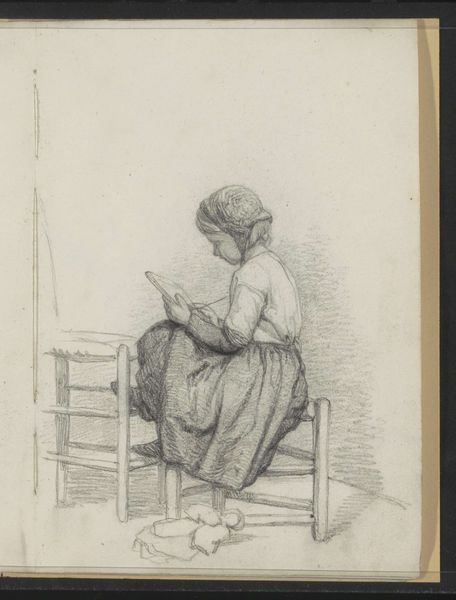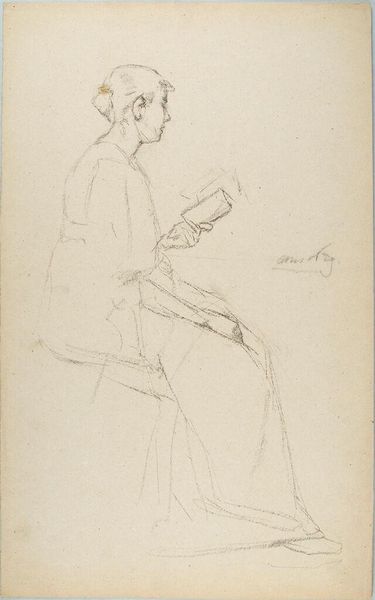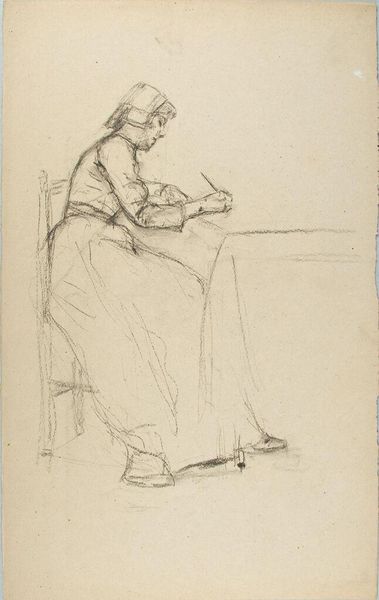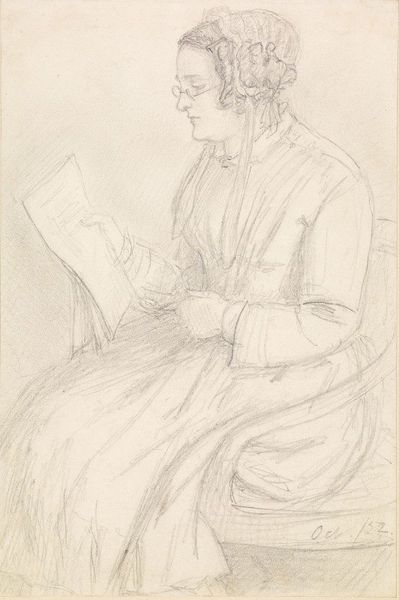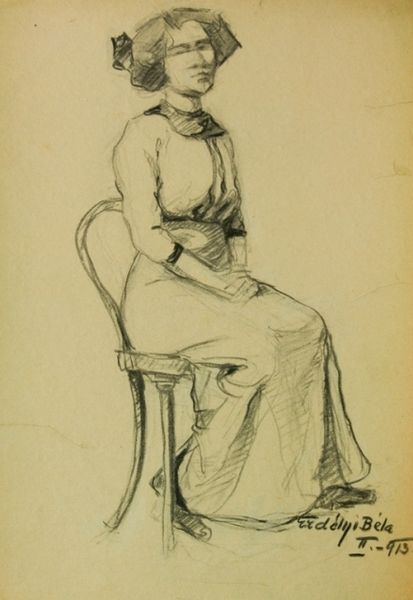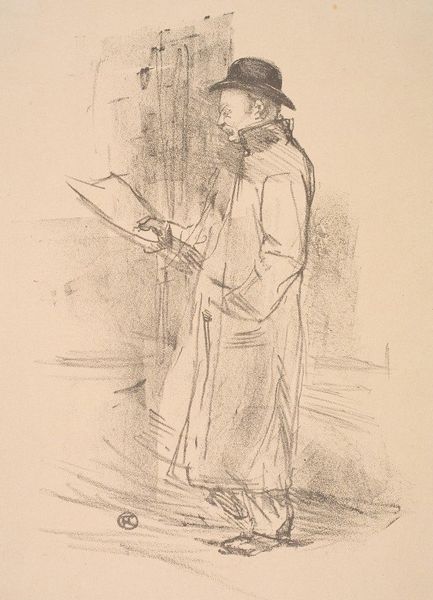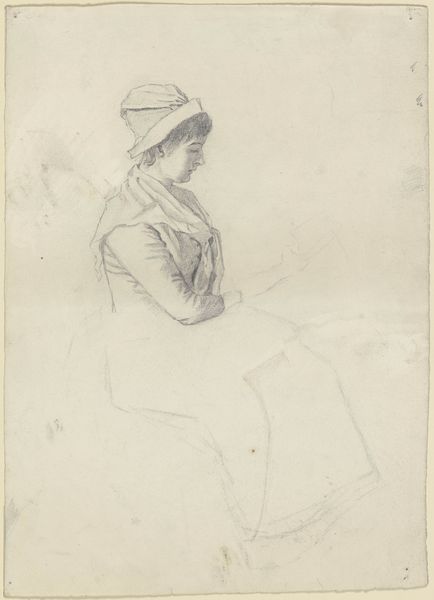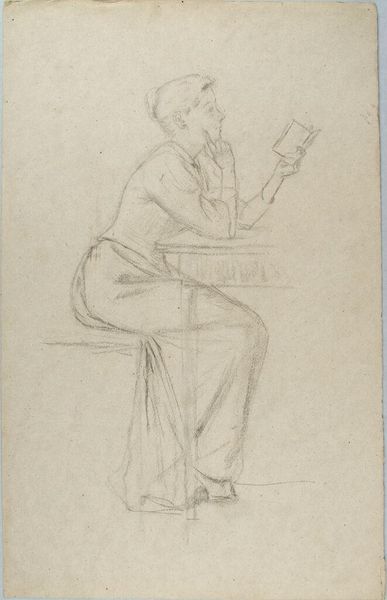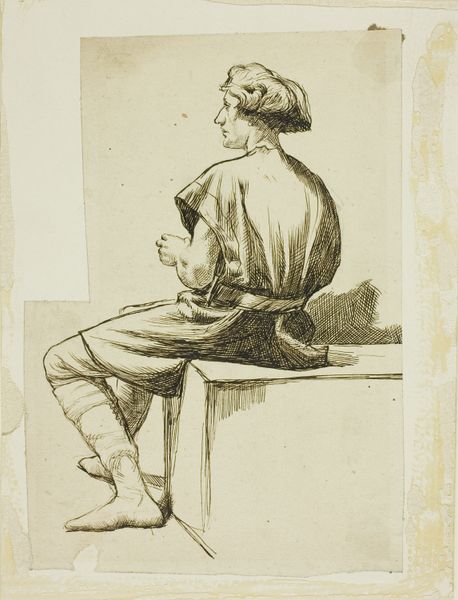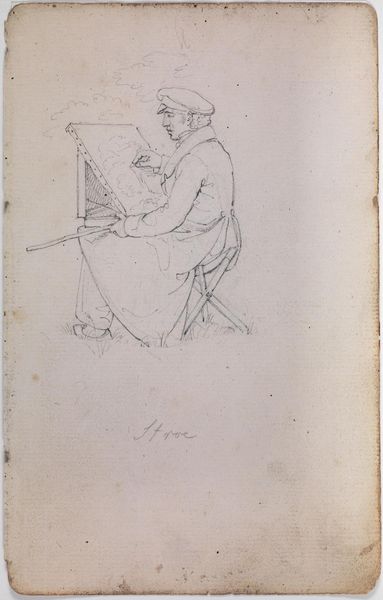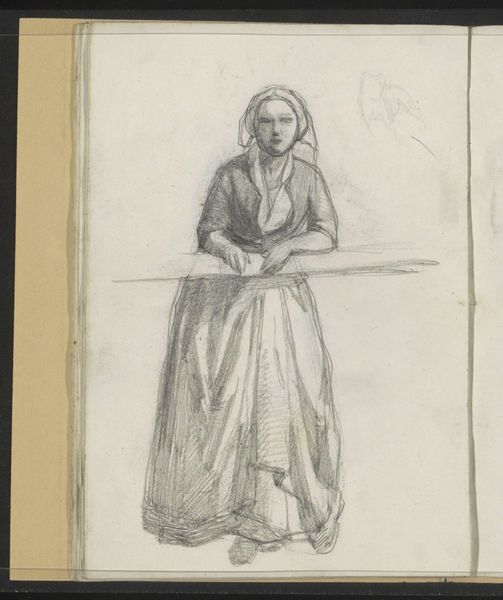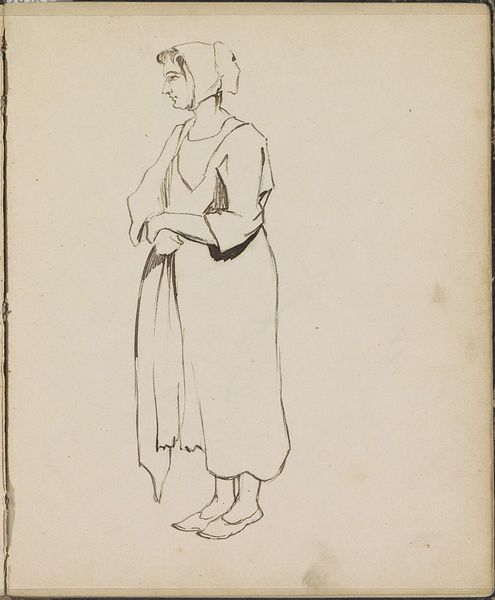
drawing, pencil
#
portrait
#
drawing
#
imaginative character sketch
#
light pencil work
#
impressionism
#
sketch book
#
personal sketchbook
#
character sketch
#
ink drawing experimentation
#
pen-ink sketch
#
pencil
#
sketchbook drawing
#
genre-painting
#
storyboard and sketchbook work
#
sketchbook art
#
realism
Copyright: Rijks Museum: Open Domain
Curator: This touching pencil drawing, found here at the Rijksmuseum, is entitled "Seated Old Woman Before a Bible on a Lectern," attributed to Jozef Israëls and believed to have been created sometime between 1834 and 1911. Editor: Immediately, I'm struck by its gentle solemnity. The old woman, rendered with such soft pencil strokes, exudes a quiet dignity as she pores over the Bible. Curator: Israëls was a key figure in the Hague School, known for their realist depictions of Dutch peasant life and their sympathetic portrayals of the working class. Works like this were powerful for forging social connections across different audiences at the time. Editor: Absolutely. And the Bible, prominently displayed on the lectern, is laden with layers of symbolism. Beyond its obvious religious connotations, it represents knowledge, wisdom, and the continuity of tradition. The book's presence speaks to the subject’s grounding in faith and, potentially, comfort found in those texts. Curator: It also reveals the role of the church in the lives of working-class people. Religious teachings were important, but religious spaces were social spaces, community hubs. Israëls had a real commitment to portraying his subjects' inner lives, which meant understanding how various socio-political constructs informed them. Editor: It’s so delicately rendered. The lines of her face tell a story of hardship and resilience, yet her posture is one of quiet strength. And her gesture, that single finger resting on the page—it anchors her not only to the text, but, on a meta level, to this act of witnessing and study. Curator: I agree. It's not simply a realistic portrait but an intimate study. Israëls seeks to represent the virtue and strength he perceived within this humble woman. By imbuing this everyday scene with dignity, the artist challenges societal assumptions and invites empathy. Editor: It’s a testament to the power of observation. I leave feeling like I've glimpsed not just an individual, but an entire legacy. Curator: For me, this work is evidence of art’s capacity to enshrine value where society often chooses not to see it.
Comments
No comments
Be the first to comment and join the conversation on the ultimate creative platform.
